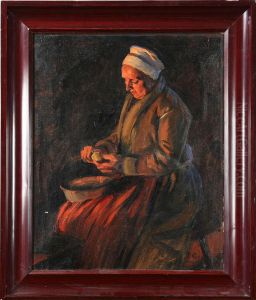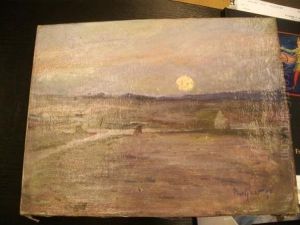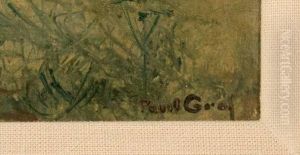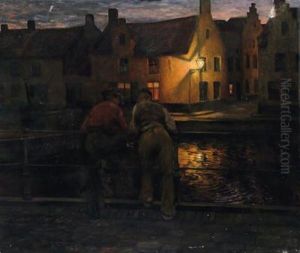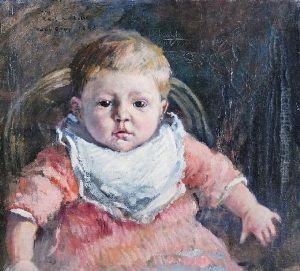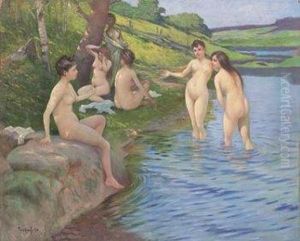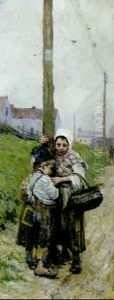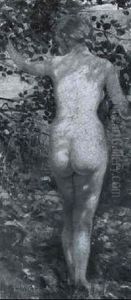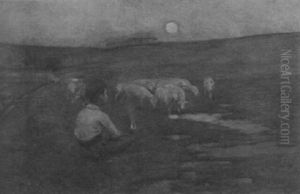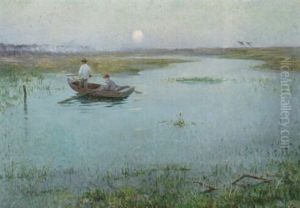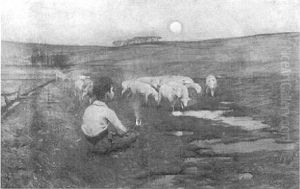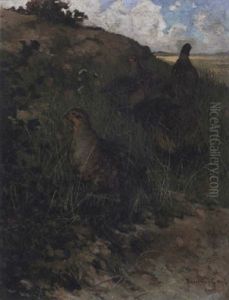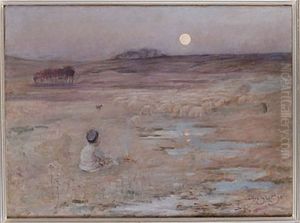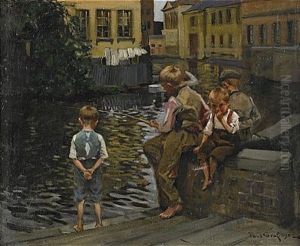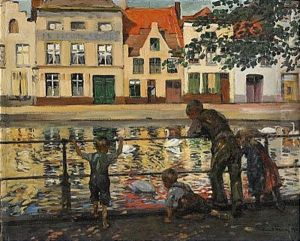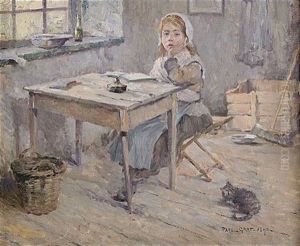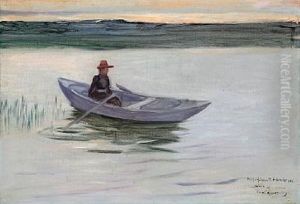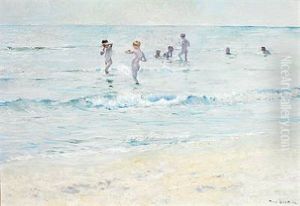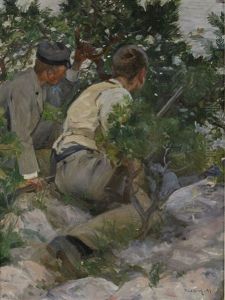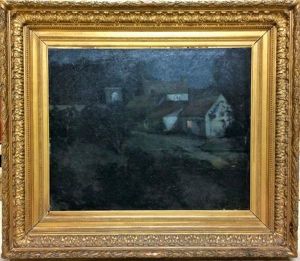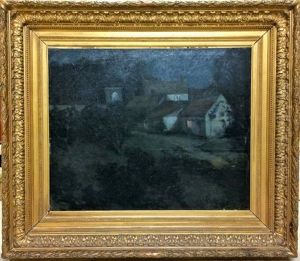Paul Edmund Graf Paintings
Paul Edmund Graf was an Austrian artist known for his work as a painter, illustrator, and graphic artist. He was born on January 2, 1872, in Vienna, Austria, and developed an interest in the arts at a young age. Graf studied at the Academy of Fine Arts Vienna under the guidance of Christian Griepenkerl, a distinguished professor and historical painter. During his time at the academy, Graf honed his skills in painting and drawing, which would later become the foundation of his artistic career.
Graf's work was influenced by the Art Nouveau movement, which was prevalent during the late 19th and early 20th centuries. His style was characterized by elegant lines and a decorative quality that was common among his contemporaries. He was also influenced by the Vienna Secession, a movement that sought to break away from the traditional academic art of the time. Graf's illustrations and graphics often featured floral motifs, sinuous forms, and a focus on aesthetics, aligning with the ideals of the Secession.
In addition to his paintings and graphic work, Paul Edmund Graf was also known for his book illustrations. He created images for a variety of literary works, bringing stories to life with his distinctive visual style. During his career, Graf exhibited his work in several important exhibitions, including those held by the Vienna Künstlerhaus, an association of artists in Vienna.
Despite the prominence of his work during his lifetime, Paul Edmund Graf is not as widely known today compared to some of his contemporaries. However, his contributions to the fields of painting, illustration, and graphic art are still recognized by art historians and collectors. Graf's work remains a part of the artistic heritage of Austria and the larger Art Nouveau movement.
Paul Edmund Graf passed away on November 16, 1947, in Vienna. Throughout his life, he witnessed significant changes in the art world and contributed to the rich tapestry of early 20th-century art. His legacy lives on through his art, which continues to be appreciated for its elegance and decorative beauty.
